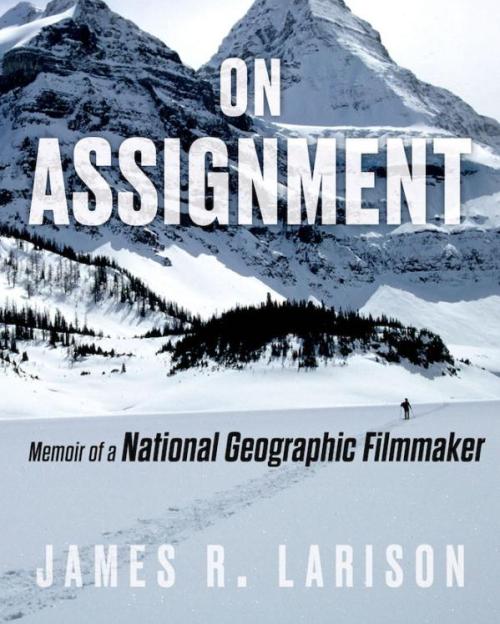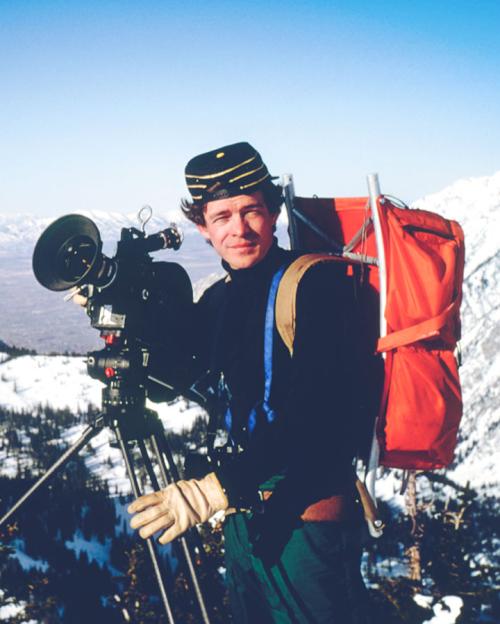During his decades as a filmmaker specializing in nature documentaries, James Larison ’70, PhD ’01, survived a terrifying encounter with a tiger shark in the Great Barrier Reef. He narrowly escaped death in a small plane crash in Alaska’s Bering Sea—and later endured another close call when he and his family were aboard an airliner that made a jarring emergency landing after an engine caught fire on take-off.
But as dramatic as those events were, in Larison’s telling they pale in comparison to the existential threat facing all life on Earth: global climate change.
Now retired and living in Oregon, Larison shares those observations, and many others, in On Assignment: Memoir of a National Geographic Filmmaker.
Published in November by Chicago Review Press, the book recounts his long career making films around the globe—from the icy heights of the Canadian Rockies to the depths of the Caribbean’s Cayman Trench.
Realizing that they didn’t want to endure long separations as his career began to flourish, she became a partner in his filmmaking endeavors; eventually, their two young boys traveled with them.
“My sons rib me all the time about the things I exposed them to,” Larison says of their adventure-laden, globe-trotting upbringing. “But they deeply appreciate all the places they got to go and all the things they got to do and experience.”
On Assignment opens with the youthful Larisons on their rustic honeymoon, a canoe camping trip in northeast Ontario in summer 1967. It goes on to recount such dramas as the fraught days after Larison’s Alaskan plane crash: with communication to the Lower 48 spotty, Elaine—pregnant with their first child—is unclear how badly hurt he is.
In another harrowing episode, Elaine suffers a fall during a climb down an ice field on Canada’s Continental Divide and, adamantly refusing a rescue helicopter, hikes out on a fractured fibula.
“Philosophically, I believe that marriage works best when you share everything—all goals and perspective and knowledge,” Larison observes. “I don’t see how anyone could do the kind of work we did without your family ‘hooked to your hip,’ so to speak. We never would have survived [as a couple] had Elaine not been as committed and eager to do it as I was; I lucked into a woman who would share that with me.”
He adds: “When you get married at 18, you grow up together; we grew in the same directions and wanted the same things.”
Studying ecology and evolutionary biology and conducting research through the Lab of Ornithology, he wrote a dissertation on the toxic effects of heavy metal contamination in a Colorado mining region—becoming the first to identify cadmium as the cause of a previously unexplained brittle-bone disease in white-tailed ptarmigan.
A focus on the changing climate
Larison’s documentary work involved capturing images in far-flung corners of the world over the course of decades; that, combined with his academic pursuits, made him an early advocate of stemming climate change.
Having witnessed first-hand how glaciers have receded—among myriad other warning signs—he dedicated the latter part of his career to sounding the alarm in such films as Diversity of Life, which aired in the early 1990s.
He was shocked and unsettled when his family received death threats—as happened after the release of Ancient Forests, which detailed the environmental and other benefits of sparing old-growth trees from logging.
“I was trained at Cornell to see things from a scientific point of view, and in a data- and fact-based world,” Larison says. “It always surprised me when I ran up against opposition that was more emotional; I’d write a section of a film that I thought conveyed what was going on, and I’d get crucified by people who objected to it being said. That never has been easy to deal with—but I just believe that I’m doing the right thing.”
Read the story in Cornellians.








